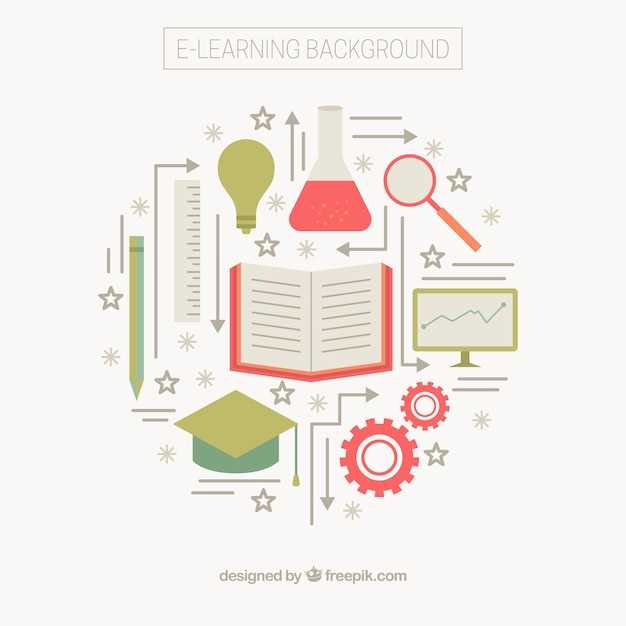Ultimate Guide to Effective Research Methodology for Academic Achievement
In the pursuit of knowledge, a solid foundation is essential. Every thinker embarks on unique journeys, each filled with discovery and insight. The questions we ask shape our exploration. How we approach these inquiries plays a pivotal role in our understanding of the world. As such, examining the strategies and processes behind effective inquiry is crucial.
Understanding the intricacies of thought exploration can be both exhilarating and daunting. It requires intellectual rigor and careful planning. Every decision impacts the outcome. Engaging with different perspectives enriches the process. The complexity of unraveling ideas necessitates a structured approach.
Furthermore, navigating through various techniques and principles can empower individuals. By gaining insight into the diverse methodologies, one can enhance analytical skills. Establishing a clear framework aids not only in clarity but also in creativity. This interplay fosters a nurturing environment for innovative thinking, ultimately leading to fruitful conclusions.
As we delve deeper into this topic, readers will uncover invaluable insights that can transform their approach to inquiry. From formulating compelling questions to synthesizing information, every aspect contributes to a richer understanding. The journey may be challenging, yet the rewards are profound. Ultimately, the ability to engage thoughtfully with various concepts is a skill everyone can master.
Comprehensive Guide to Research Methodology

In the realm of inquiry, mastering the art of systematic investigation is essential. Scholars and practitioners embark on journeys of knowledge, seeking to uncover truths and cultivate understanding. It is crucial to navigate through a myriad of techniques and principles that lay the foundation for effective exploration.
Exploring this landscape can be both exhilarating and daunting. Choices abound, each guiding the seeker down a different path. Clarifying objectives is a vital first step; knowing what to accomplish shapes the entire endeavor. The appropriate framework not only directs actions but also influences outcomes dramatically.
- Identify your main questions.
- Utilize various information sources.
- Carefully select methods for data collection.
- Analyze findings thoroughly.
- Formulate conclusions based on evidence.
Through this journey, individuals will encounter qualitative and quantitative approaches, both necessary in different contexts. Their strengths and weaknesses can dramatically shift the results depending on how they align with the intended goals. Moreover, ethical considerations play a pivotal role, ensuring integrity and respect for all participants involved.
- Begin with a solid plan.
- Embrace flexibility as new insights emerge.
- Seek feedback from peers and mentors.
- Refine your approach constantly based on experience.
This intricate dance of strategy, ethics, and analysis culminates in a richer understanding of the chosen domain. As subjects unfold, new questions will likely arise, creating an ongoing cycle of curiosity and discovery. Ultimately, it is the pursuit of knowledge intertwined with rigorous practices that illuminates the path ahead, leading to profound insights and contributions.
Understanding Research Methodology for Students

Exploring approaches to scholarly inquiry can be both exciting and daunting. Many students encounter challenges when delving into various techniques. Knowing how to investigate effectively is crucial. It serves as a foundation for producing credible and reliable outcomes. A solid approach can illuminate paths to new knowledge and insights.
Every academic project begins with a question or a problem to solve. This initial step requires clarity and focus, which often shape the remainder of the process. Therefore, choosing the right method is imperative. A thoughtful selection will enhance the overall quality of work undertaken. Understanding different types of inquiry will ultimately empower students in their pursuits.
The distinction between quantitative and qualitative techniques is vital. Each offers unique perspectives and brings its own strengths. Quantitative tasks emphasize numerical data, while qualitative ones delve into meanings and experiences. Both approaches contribute significantly to the advancement of knowledge in distinct ways. Balancing these methods can often lead to a more comprehensive understanding of the subject matter.
As you progress, gathering and analyzing information becomes essential. Collecting data is just the beginning; how it’s interpreted matters greatly. Employing various tools to analyze findings enriches conclusions drawn from the study. Carefully evaluating outcomes ensures that the work is robust and credible. This critical stage often dictates the effectiveness of the overall inquiry.
The process doesn’t end with gathering information. Sharing results with peers and mentors can provide invaluable feedback. This can lead to a deeper understanding of findings and potential implications. Moreover, effective communication of results is as important as the inquiry itself. A well-crafted presentation can amplify the impact of one’s research and open doors for future opportunities.
In conclusion, mastering techniques of scholarly exploration fosters growth and learning. Students who invest time in understanding their methods can expect enhanced results. This journey may be intertwined with challenges, but perseverance and adaptability can lead to exceptional outcomes. Embarking on this adventure not only provides knowledge but also shapes the future of the field. Embrace this opportunity to expand horizons and contribute to the vast realm of human understanding.
The Importance of a Solid Foundation
Building a strong base is crucial for achieving one’s aims. It ensures that future endeavors are stable and grounded. Without a robust starting point, even the most promising plans can falter. This foundation is not merely a formality; it is essential.
The initial stages set the tone for everything that follows. Each element must be thoughtfully considered and carefully crafted. A well-structured framework allows for flexibility and adaptability as circumstances evolve. By laying down the right groundwork, obstacles become easier to navigate.
For instance, when embarking on an undertaking, one must focus on clarity and direction. Establishing clear objectives can guide decision-making processes significantly. It helps in maintaining focus amidst potential distractions.
Moreover, the values and principles laid out in the beginning often dictate the trajectory. A coherent structure fosters a sense of assurance, enhancing productivity over time. Consequently, individuals find themselves more inclined to pursue their goals vigorously.
In summary, acknowledging the significance of a well-constructed foundation cannot be overstated. It is the bedrock upon which all achievements rest, empowering individuals to face challenges head-on. A thoughtful approach to the initial phases guarantees not only resilience but also the potential for extraordinary outcomes.
Types of Research Approaches
When embarking on an exploration, one must consider various strategies. Each approach has its own characteristics and serves distinct purposes. Understanding these variations is essential for effective inquiry. From qualitative to quantitative methods, the choices are abundant. Researchers often select a method based on their objectives and the nature of the topic.
Quantitative methods typically focus on numerical data and statistical analysis. These techniques provide measurable results, allowing for comparison and generalization. Surveys, experiments, and structured observations are common examples of this approach. On the other hand, qualitative methods delve deeper into understanding phenomena through descriptive data.
Qualitative techniques often involve interviews, focus groups, and content analysis. This approach seeks to uncover meanings and explore human experiences in depth. It offers rich insights that numbers alone cannot convey. Sometimes, researchers adopt a mixed-methods approach, combining both qualitative and quantitative strategies.
By integrating the strengths of both methodologies, one can attain a more holistic perspective. This flexibility can enhance the depth and breadth of findings. Ultimately, choosing the right type hinges on the questions posed and the context in which the investigation occurs. A clear understanding of these approaches illuminates the path toward meaningful conclusions.
Steps in the Research Process
Embarking on an inquiry requires a clear path to navigate successfully through the complexities involved. Every phase plays a critical role in shaping the outcome. From the initial conception to the final reporting, there are vital actions that cannot be overlooked. Each step builds on the previous one, creating a cohesive framework for discovery. The journey can be intricate, but with a structured approach, it becomes manageable.
The first step often involves identifying a topic of interest. This is followed by reviewing existing literature and refining the focus. Gathering information is crucial, as it helps lay the foundation for future work. A well-defined question will emerge at this stage. It becomes the guiding light of the entire undertaking.
Next, one must determine the best approach to collect data. Various techniques exist, each serving different purposes and yielding diverse insights. Both qualitative and quantitative methods can be utilized, depending on what one aims to explore. Selecting the most suitable strategy is paramount to achieving credible results.
Once the methodology is established, it’s essential to gather and analyze data systematically. This phase can be daunting, but it’s when raw information transforms into meaningful findings. With a rigorous analysis, patterns and trends will likely emerge, which can lead to significant conclusions. The interpretation should align with the overarching question, providing clarity and direction.
Finally, it is time to present the findings to a broader audience. Crafting a compelling narrative is crucial; the results must resonate with peers and stakeholders. Clear communication enhances the impact of the work. This step also includes reflecting on the entire process, noting what worked well and what could be improved in future endeavors. Each inquiry is a learning opportunity, making every step integral to personal and intellectual growth.
Common Pitfalls in Research Design
Every scholar faces challenges when creating a solid framework for an inquiry project. Issues often arise due to a lack of clarity or unthoughtful planning. These missteps can lead to wasted time and inconclusive results. Understanding these common errors is crucial, as it allows for better preparation and execution.
One frequent mistake is failing to define clear objectives. Many may overlook the importance of having specific goals. Without well-articulated aims, direction becomes muddled. This ambiguity can derail the entire process, resulting in unfocused efforts and disappointing outcomes.
Another trap is neglecting the literature review. Scholars might jump into data collection prematurely, ignoring existing work. This oversight can lead to duplication and missed opportunities for valuable insights. Engaging thoroughly with prior studies enriches the entire project.
Sample size can also be a source of error. Researchers sometimes choose a size that is either too small or disproportionately large. Such decisions can skew results and impact the validity of findings. It’s essential to carefully consider how sample size affects representativeness.
The choice of methodology is paramount. Some may select techniques poorly suited to their questions, leading to irrelevant conclusions. Others might become overly ambitious, trying to incorporate multiple methods without a clear rationale. Striking a balance is key.
Lastly, underestimating time management can be detrimental. Procrastination or poor scheduling leads to rushed conclusions and sloppy work. With a well-structured timeline, one can maintain focus and ensure comprehensive completion.
Effective Tools and Techniques for Research

Every academic pursuit demands well-considered strategies and instruments. These resources can streamline the journey, leading to profound insights. Utilizing varied methodologies enhances outcomes. Moreover, staying organized boosts efficiency. In this section, we explore effective instruments and techniques that empower seekers of knowledge.
One principal tool is the digital library. They house extensive databases and archives. Accessing a myriad of articles and journals becomes seamless. Search functionalities allow users to pinpoint relevant materials. These resources are invaluable for any serious scholar aiming to deepen their understanding.
Another significant element is advanced note-taking software. This technology enables efficient documentation of findings. Integrating multimedia enhances the learning experience. Many options allow for tagging and organization of information meticulously. This ensures that details are easily retrievable when needed most, leading to better synthesis of ideas.
Collaboration platforms play a vital role in today’s academic environment. Tools like these facilitate idea exchange and collective progress. Engaging with peers can lead to innovative outcomes that one might not achieve solo. Such interactions can stimulate creativity and critical thinking, enriching the overall output.
| Tool/Technique | Description |
|---|---|
| Digital Libraries | Access to a vast array of scholarly articles and books. |
| Note-Taking Software | Organized documentation and integration of multimedia elements. |
| Collaboration Platforms | Facilitates group discussions and idea sharing among peers. |
| Data Analysis Tools | Helps in examining and interpreting complex data sets easily. |
| Reference Management Software | Streamlines citation and bibliography preparation automatically. |
Lastly, data analysis applications cannot be overlooked. These aids simplify the processing of extensive datasets while providing insights that inform decisions. With intuitive interfaces and diverse functionalities, researchers can delve deeper into their findings, leading to more substantiated conclusions.
In conclusion, leveraging these diverse instruments and strategies enhances the journey of discovery. Selecting the right mix will depend on individual needs and preferences. Ultimately, the key to triumph lies in a combination of effective tools and innovative approaches.
Technology and Software for Data Collection
In today’s world, the realm of information gathering has transformed dramatically. Various tools and platforms enable efficient and accurate collection of data. With the right applications, the process can become seamless and streamlined. These technologies not only save time but also enhance the quality of the information acquired.
Many options exist for different needs. Some solutions cater to surveys, while others are perfect for experiments or observations. Software today often includes features for data analysis, too. This integrated approach allows users to conduct studies more effectively. The amalgamation of various functions into a single platform is a significant advantage.
For instance, online survey tools such as Google Forms or SurveyMonkey offer intuitive interfaces. Researchers can create questionnaires, distribute them, and automatically compile results. This automation reduces human error and speeds up the process. On the other hand, specialized programs like SPSS or R provide deeper analytical capabilities, transforming raw data into meaningful insights for improved decision-making.
Mobile applications also play a crucial role in modern data collection. They allow researchers to capture information in real-time, often with capabilities for offline access. This flexibility ensures that valuable insights are not missed due to connectivity issues. Additionally, many apps support multimedia inputs, enriching the data-gathering experience.
Collaboration tools further enhance the data collection process. Platforms such as Trello, Asana, or Slack foster teamwork and communication. They enable researchers to track progress and share findings instantly. By utilizing these technologies, groups can maintain momentum and keep their projects on track.
As technology evolves, the potential for innovative data collection methods expands. Emerging tools, such as artificial intelligence and machine learning, promise to revolutionize how information is gathered and analyzed. Ultimately, embracing these advancements will not only simplify tasks but also lead to more effective outcomes in various fields.
Analyzing and Interpreting Research Data
Delving into the realm of data evaluation is both intriguing and complex. It involves dissecting numbers, trends, and relationships that convey stories hidden within the collected information. Understanding these intricacies allows us to draw informed conclusions, guiding subsequent actions or recommendations. This stage is where intuition meets rigor; we must balance creativity and logic. It’s a process that demands not only analytical skills but also critical thinking.
First, one must clean and organize the data. This step is often tedious yet essential. Ensuring accuracy lays the groundwork for meaningful insights. Next comes the application of various analytical techniques aimed at uncovering underlying patterns. Statistical methods such as correlation analysis or regression may appear daunting, but they serve to illuminate connections that would otherwise remain obscure.
Visualization tools play a significant role in this context. Graphs, charts, and plots transform raw figures into understandable formats. These visual aids engage the audience effectively. By presenting information visually, complex relationships become easier to grasp. Furthermore, they enable one to communicate findings clearly to others, enhancing comprehension and engagement.
Once analysis is complete, the next phase is interpretation. This is where conclusions are drawn, and implications are discussed. It requires a nuanced understanding of the subject matter. Ask questions: What does the data indicate? Are there any surprising revelations? The context surrounding the data is critical; without it, interpretations may lead to misconceptions. Thus, collaborating with peers can provide invaluable perspectives, enriching the interpretative process.
Finally, documenting findings is crucial. A well-structured report encapsulates the analysis and interpretation phases cohesively. This record serves not only as a reference but also as a means of communicating results to a broader audience. In this way, the journey from raw data to insightful conclusions becomes a shared experience, fostering knowledge and understanding within the academic community.
Utilizing Evidence in Research Reporting
In any scholarly endeavor, the use of credible and relevant data is essential. Evidence serves as the backbone of a compelling argument. It enhances the validity of claims and supports assertions. Relying on facts not only strengthens the narrative but also fosters trust between the author and the audience.
When incorporating evidence, diverse sources can provide a well-rounded perspective.
- Peer-reviewed journals
- Books by authoritative figures
- Official statistics
- Case studies
Each type of source has its strengths. For instance, peer-reviewed articles offer rigorous analysis, while case studies highlight real-life application. Combining different kinds of evidence can create a more dynamic presentation. It allows the researcher to cover various angles of the topic.
- Identify key points that need support.
- Select evidence that aligns with these points.
- Use appropriate citations to enhance credibility.
- Avoid cherry-picking data; aim for an unbiased representation.
- Analyze the evidence; don’t just present it.
This methodology ensures that the argument is not only supported by data but also critically evaluated, adding depth to the narrative. When presented systematically, concrete evidence provides a lens through which the audience can assess the reliability of the work. Failing to include adequate substantiation can undermine even the most well-intentioned exploration, leading to skepticism or misunderstanding.
In conclusion, effectively utilizing evidence transforms an ordinary narrative into a compelling discourse. Thoughtful integration enables a strong foundation, fostering a deeper engagement with the material presented.
Video:
“#introduction to #research #Methodology: A Quick Overview”
“#introduction to #research #Methodology: A Quick Overview” by Scholars Consultancy 9 views 1 month ago 1 minute, 1 second
Q&A:
What is the importance of choosing the right research methodology in academic studies?
Choosing the right research methodology is crucial for academic success as it determines how effectively you can answer your research questions. A well-chosen methodology aligns with your research objectives and allows for accurate data collection and analysis. It also strengthens the credibility of your study and the reliability of your findings. Different methodologies, whether qualitative, quantitative, or mixed methods, serve specific purposes and can significantly impact the interpretation of results, making it essential to select one that suits the nature of your inquiry.
Can you explain the difference between qualitative and quantitative research methods?
Qualitative and quantitative research methods differ primarily in their approach to data collection and analysis. Qualitative research focuses on understanding concepts, opinions, or experiences through methods like interviews, focus groups, and observations. It provides in-depth insights into the topic but may involve smaller sample sizes. On the other hand, quantitative research quantifies data and generalizes results across populations through statistical analysis. It often employs surveys, experiments, and numerical data to evaluate relationships and trends. Both methods can be valuable depending on the research question and objectives, and researchers may choose to employ a mixed-methods approach for a more comprehensive understanding.
What are some common pitfalls to avoid when developing a research methodology?
When developing a research methodology, it’s essential to avoid several common pitfalls. First, unclear research questions can lead to a disorganized approach and insufficient data collection. Second, using inappropriate methods that do not align with the research objectives can minimize the validity of your findings. Third, neglecting ethical considerations is critical, as it can jeopardize the integrity of your research and the welfare of participants. Lastly, failing to pilot test your tools (e.g., surveys or interview protocols) can result in unforeseen issues during data collection. Taking time to carefully plan and adhere to best practices will enhance the quality and impact of your study.
How can I ensure that my research methodology is robust and credible?
To ensure that your research methodology is robust and credible, start by conducting a thorough literature review to understand existing methodologies used in your field. Clearly define your research questions and objectives to guide your methodology choice. Use established and recognized methods for data collection and analysis, and justify your choices based on the literature. Consider conducting pilot studies to refine your tools and processes, and ensure rigorous data management practices. Lastly, maintain transparency throughout your research process by documenting your methodology clearly and allowing for peer review or feedback, which can help identify potential weaknesses in your approach.
